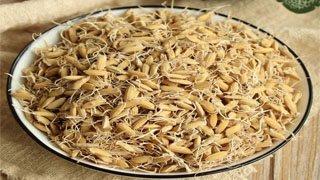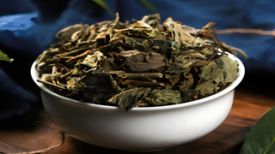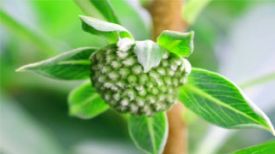
1. Aliases
Grain sprouts.2. Plant morphology
Annual herbaceous plant. The stem is upright and clustered; Hollow, with nodes and tillers. The leaves have leaf sheaths, the tongue is membranous and relatively hard, lanceolate, and the base extends downwards on both sides to coincide with the edge of the leaf sheath. When young, there are obvious leaf ears; The leaves are lanceolate to elongated lanceolate, rough, and have distinct veins. The panicle is loose, drooping downward when mature, with angular branches and long round spikelets; Infertile flower lemma cone-shaped; Fertile lemma hard papery, with 5 veins; 3 veins on the inner lemma; Stamens 6, filaments slender and weak; Ovary oblong, smooth, with 2 styles and feather shaped stigma. The caryopsis is smooth, light yellow, and white; The seed has a distinct linear hilum. The flowering and fruiting seasons are summer and autumn.
3. Origin distribution
Produced throughout the country.
4. Harvesting and processing
When ripe, cut the rice, thresh it, and sun dry it, which is the rice. Soak the rice in water for 1-2 days, take it out and put it in a container. Cover it with a damp bag and sprinkle it with water daily to keep it moist. When the fibrous roots grow 3-7 millimeters, take it out and dry it in the sun, and it is ready to sprout. Stir fry over low heat until dark yellow and mostly burst. Remove and let cool, then stir fry the grain sprouts. Stir fry over high heat until golden brown, spray lightly with water, take out and air dry, then charred glutinous rice sprouts.
5. Characteristics of medicinal herbs
It is a slightly flattened oval shape with slightly pointed ends, 7-9 millimeters long and 3-4 millimeters wide. The lemma is hard, with a yellow surface and short fine hairs. It has 5 veins. At one end, there are two symmetrical white strip paddles, about 2 millimeters long, light yellow, membranous. A light yellow curved primary root extends from the inner side of one paddle, 0.5-1.2 centimeters long. The inner lemma is thin film, smooth, yellow white, containing fruits, firm in texture, with a white cross-section and a powdery appearance. Qi is absent, taste slightly sweet.
6. Nature, taste, and meridian tropism
Warm in nature and sweet in taste. Guipi and Stomach Meridian.
7. Effect and function
Harmony and digestion, invigorating the spleen and appetizing. It belongs to the category of disinfectant.
8. Clinical applications
Dosage 9-15 grams; Large doses can be used up to 30 grams. Eating stagnation, abdominal distension, or spleen deficiency caused by starchy foods such as rice, noodles, potatoes, and taro.
9. Pharmacological research
The β - amylase contained in this product can completely hydrolyze sugar starch into maltose, while α - amylase breaks it down into short linear condensed glucose. However, the amount of α - and β - amylase contained in this product is relatively small, and its ability to digest starch is not as good as that of malt. The amylase contained in this product can help with digestion. Experiments have shown that grain sprouts have anti allergic activity by inhibiting histamine release from mast cells.
10. Chemical composition
Contains ingredients such as starch, amylase, protein, and fat. It also contains 18 amino acids such as aspartic acid and r. aminobutyric acid. The amylase contained has the function of digesting starch.
11. Taboos for use
It is not yet clear.
12. Compatibility prescription
① Qi Pi Eating: 120g of grain sprouts, minced, mixed with ginger juice and a little salt to make a cake, baked. Add 30 grams of roasted licorice, sand kernels, and Atractylodes macrocephala (stir fried with bran) each. For the end, take some white soup or pills. (Gu Shen Wan in "Dan Liao Ji Yan Fang")
② Treatment for indigestion and sallow complexion in children: 9 grams of grain sprouts, 3 grams of licorice, 3 grams of sand kernels, and 6 grams of Atractylodes macrocephala. Boiled in water. (Qingdao Chinese Herbal Medicine Handbook)
③ Treatment for stagnation of diet, chest tightness and pain: 12g of grain sprouts, 6g of hawthorn, 9g of tangerine peel, 6g of red yeast. Boiled in water. (Qingdao Chinese Herbal Medicine Handbook)


